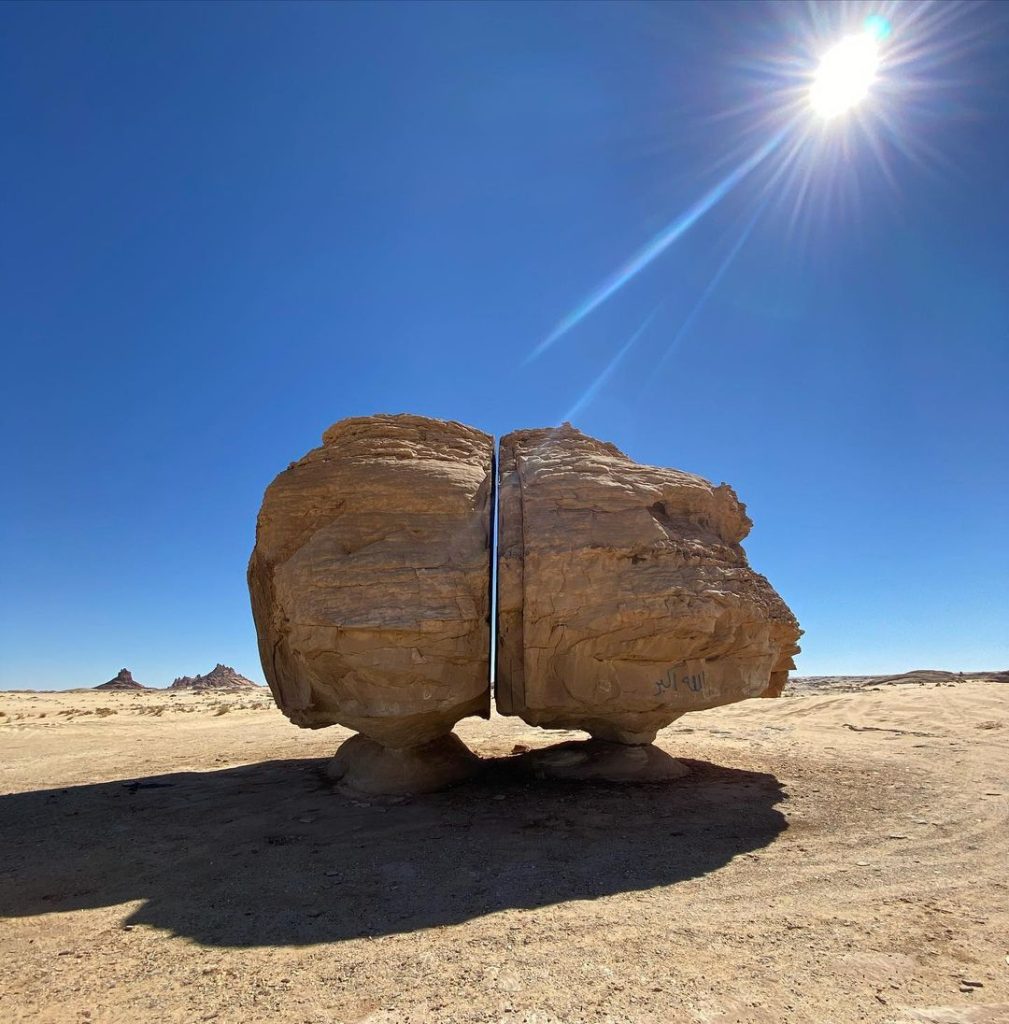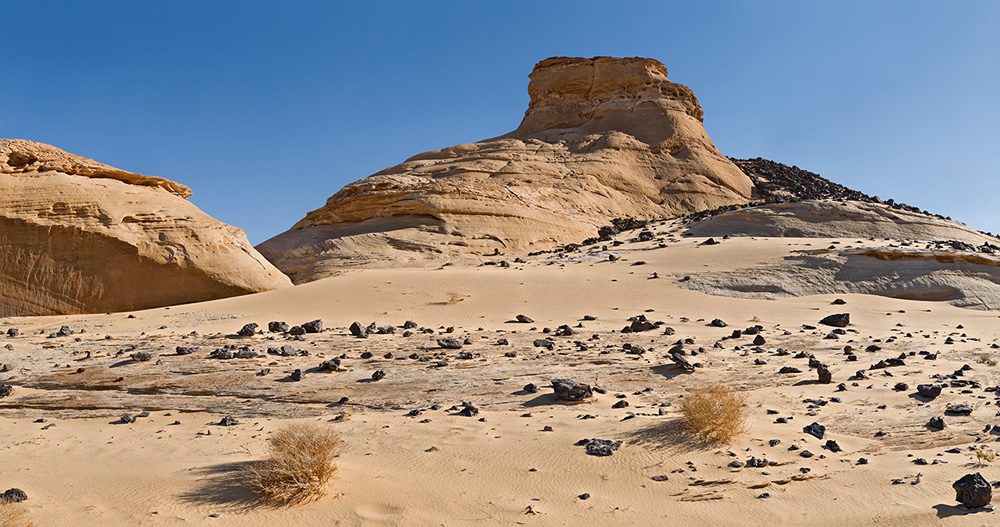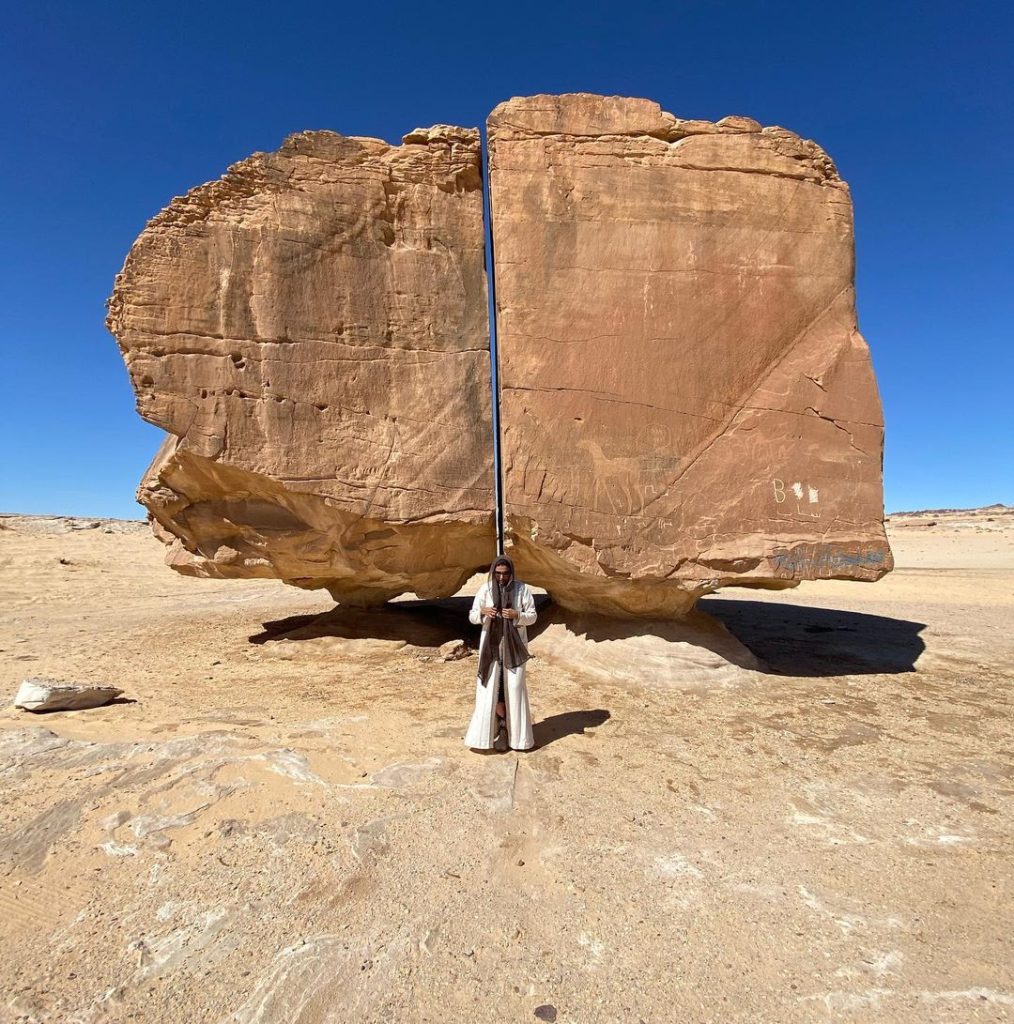Two Halves Of A Whole: How The Strange Al Naslaa Rock Formation Came To Be
In the Al Ula desert in Saudi Arabia lies a geological wonder — the Al Naslaa rock formation. This sandstone block is split precisely down the middle, creating two symmetrical pillars that seem almost too perfect to be natural. So, what caused this unique phenomenon?

One theory is that the rock split due to a sudden temperature change. This could have happened if the rock had been heated during the day and then cooled rapidly at night, causing it to contract and split. However, this explanation doesn’t account for the precision of the split.
Another theory is that the rock split due to tectonic activity. The Arabian plate, on which the Al Naslaa rock sits, is known for its seismic activity. It’s possible that a sudden shift in the Earth’s crust caused the rock to split so cleanly. However, there’s no evidence of recent earthquakes in the area, making this explanation unlikely.

A more plausible explanation is that the rock split due to erosion. The layers of sandstone in the Al Ula desert don’t all have the same hardness. With time, the natural elements have worn away the softer layers, leaving behind the harder layers.
As the rock eroded, stress built up along the plane of weakness, ultimately causing it to split. This theory is backed by the fact that the Al Naslaa rock is not the only formation in the area to exhibit this kind of split.

Regardless of the cause, the Al Naslaa rock formation is stunning. Its precise split is a testament to the power of natural forces and the incredible beauty they can create. So, the next time you visit the Al Ula desert, be sure to visit this geological wonder and marvel at its perfect symmetry.
